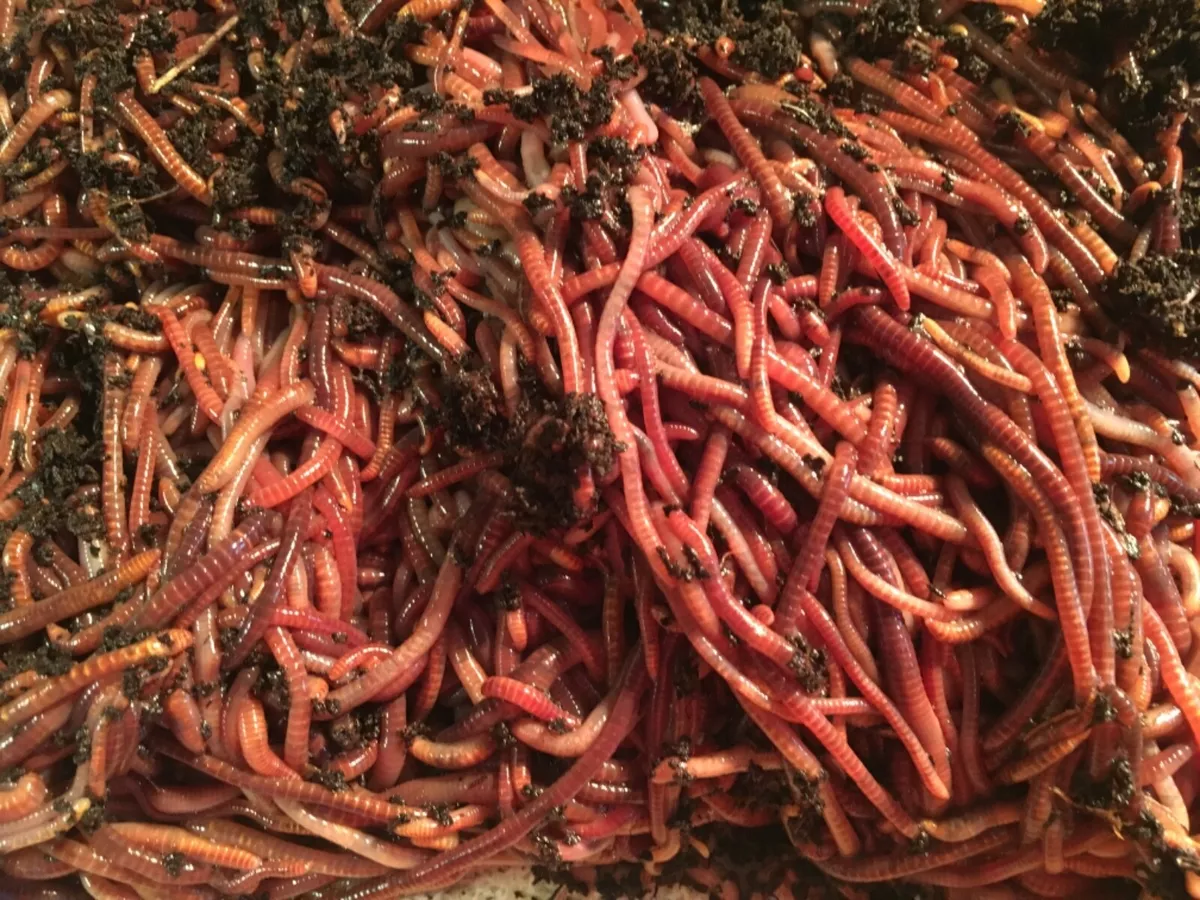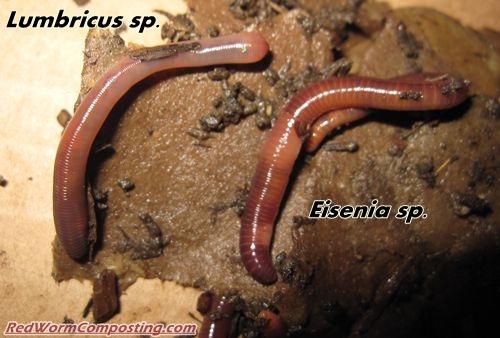Open the Perks of Red Wiggler Composting for Your Organic Garden
Wiki Article
Taking Advantage Of the Power of Red Wiggler Composting: A Comprehensive Take A Look At the Environmental and Agricultural Benefits of This All-natural Waste Decrease Method
The practice of red wiggler composting represents an engaging intersection of ecological stewardship and farming development, providing a sustainable solution to the growing challenges of waste management and dirt degradation. With the natural procedure of vermicomposting, natural waste is changed into a valuable resource that not just improves dirt yet additionally adds to a significant reduction in land fill contributions and greenhouse gas discharges. As we check out the diverse advantages of this method, we discover exactly how it can reshape agricultural techniques and advertise ecological recognition, prompting a more detailed evaluation of its possible effect on our areas and ecological communities.What Are Red Wiggler Worms?
Red wiggler worms, clinically referred to as Eisenia fetida, are a species of earthworm specifically adjusted for composting and organic waste breakdown. These worms flourish in the nutrient-rich environment of disintegrating organic issue, making them suitable for vermicomposting systems. Growing to a length of roughly 3 to 4 inches, red wigglers are defined by their reddish-brown pigmentation and distinct banding patterns along their bodies.Unlike various other earthworm varieties, red wigglers like to live in the upper layers of dirt and natural debris, where oxygen degrees are greater and food sources are bountiful. Their physiological adaptations enable them to refine organic products efficiently; they possess a strong gastrointestinal system that enables them to convert waste right into nutrient-rich castings, typically referred to as "black gold" in gardening and agricultural contexts.
Eisenia fetida plays a vital role in the environment by promoting the disintegration process, boosting soil framework, and advertising microbial activity. Offered their one-of-a-kind features and ecological value, red wiggler worms have actually come to be a central part in lasting waste administration methods and organic gardening efforts, adding considerably to environmental health.
Advantages for Soil Health And Wellness
The addition of red wiggler worms in composting systems supplies substantial advantages for soil wellness. These worms play a vital function in the decomposition procedure, breaking down raw material right into nutrient-rich vermicompost. This all-natural fertilizer improves dirt oygenation, structure, and water retention, adding to a more positive setting for plant growth.Vermicompost is abundant in crucial nutrients such as potassium, phosphorus, and nitrogen, which are crucial for plant growth (Red Wiggler Composting). The existence of beneficial microbes in vermicompost further promotes soil health and wellness by boosting nutrient availability and suppressing soil-borne virus. This dynamic interaction fosters a robust soil ecosystem that sustains lasting farming methods
Additionally, red wigglers assist in the development of humus, a stable raw material that boosts soil fertility and durability. This boosted natural material not only enhances dirt structure yet also improves its ability to sequester carbon, reducing climate adjustment impacts.
Incorporating red wiggler composting into farming systems can, for that reason, result in much healthier soils, greater crop yields, and enhanced sustainability. Therefore, embracing this natural waste reduction method can yield profound benefits for both the setting and agricultural performance.
Effect On Waste Decrease
Including red wiggler worms into composting systems substantially reduces waste, changing natural materials that would otherwise add to landfills into important compost. This method, called vermicomposting, successfully refines kitchen area scraps, yard waste, and other naturally degradable materials, resulting in a substantial decrease in the quantity of waste sent out to land fills. According to the Epa, organic waste consists of a substantial part of land fill materials, creating hazardous greenhouse gases as it decays anaerobically.By utilizing red wigglers, a very effective composting agent, organizations and families can divert a significant amount of natural waste from these land fills. Each pound of red wigglers can process and consume about half a pound of organic waste daily, causing an exceptional decrease in general waste generation.
In addition, the application of vermicomposting assistances local waste administration initiatives and advertises a circular economy, wherein waste is changed into a source. As communities increasingly embrace this method, the cumulative impact on waste reduction ends up being evident, fostering a much more sustainable setting and motivating accountable waste administration practices. Welcoming red wiggler composting not only mitigates waste problems but also enhances neighborhood understanding concerning sustainable living.
Enhancing Agricultural Practices
Making use of red wiggler worms in agricultural techniques can considerably improve soil health and wellness and plant performance. These worms play an important duty in the composting process, damaging down organic matter right into nutrient-rich vermicompost. This all-natural fertilizer boosts dirt oygenation, water, and structure retention, which are vital for durable plant development.In addition, the castings generated by red wigglers are abundant in important nutrients, such as phosphorus, nitrogen, and potassium, promoting healthier plants with greater navigate to these guys returns. The microbial task promoted by these worms also contributes to a growing soil ecosystem, boosting biodiversity and strength against diseases and pests.

Furthermore, using vermicompost can improve dirt pH degrees, making nutrients more easily accessible to plants. Red Wiggler Composting. Because of this, farmers can grow much healthier crops while simultaneously adding to dirt preservation initiatives, eventually developing a more sustainable agricultural future
Obtaining Started With Composting
Beginning your composting journey requires an understanding of the important components and processes entailed. The primary active ingredient in red wiggler composting is natural waste, which can consist of cooking area scraps, lawn waste, and paper items. It is crucial to preserve an equilibrium between green materials, abundant in nitrogen, and brownish products, high in carbon. This balance cultivates an optimal environment for red wigglers, which are the key organisms in this composting technique.check this Picking an appropriate composting system is equally important. Worm bins can be developed for interior or exterior use, and they should supply adequate water drainage and oygenation. It is recommended to start with a small number of worms-- about one pound of red wigglers for every one extra pound of waste produced weekly.

Conclusion
The technique of red wiggler composting represents a compelling crossway of environmental stewardship and farming innovation, offering a lasting remedy to the growing difficulties of waste administration and soil degradation.In addition, the application of vermicomposting supports neighborhood waste monitoring initiatives and promotes a circular economic situation, wherein waste is changed right into a resource. As communities significantly embrace this method, the advancing effect on waste reduction comes to be apparent, cultivating a more lasting setting and motivating accountable waste management methods. The key ingredient in red wiggler composting is natural waste, which can include kitchen area scraps, lawn waste, and paper products.In summary, red wiggler composting presents a sustainable remedy for organic waste administration, producing nutrient-rich vermicompost that substantially enhances dirt health and wellness.
Report this wiki page